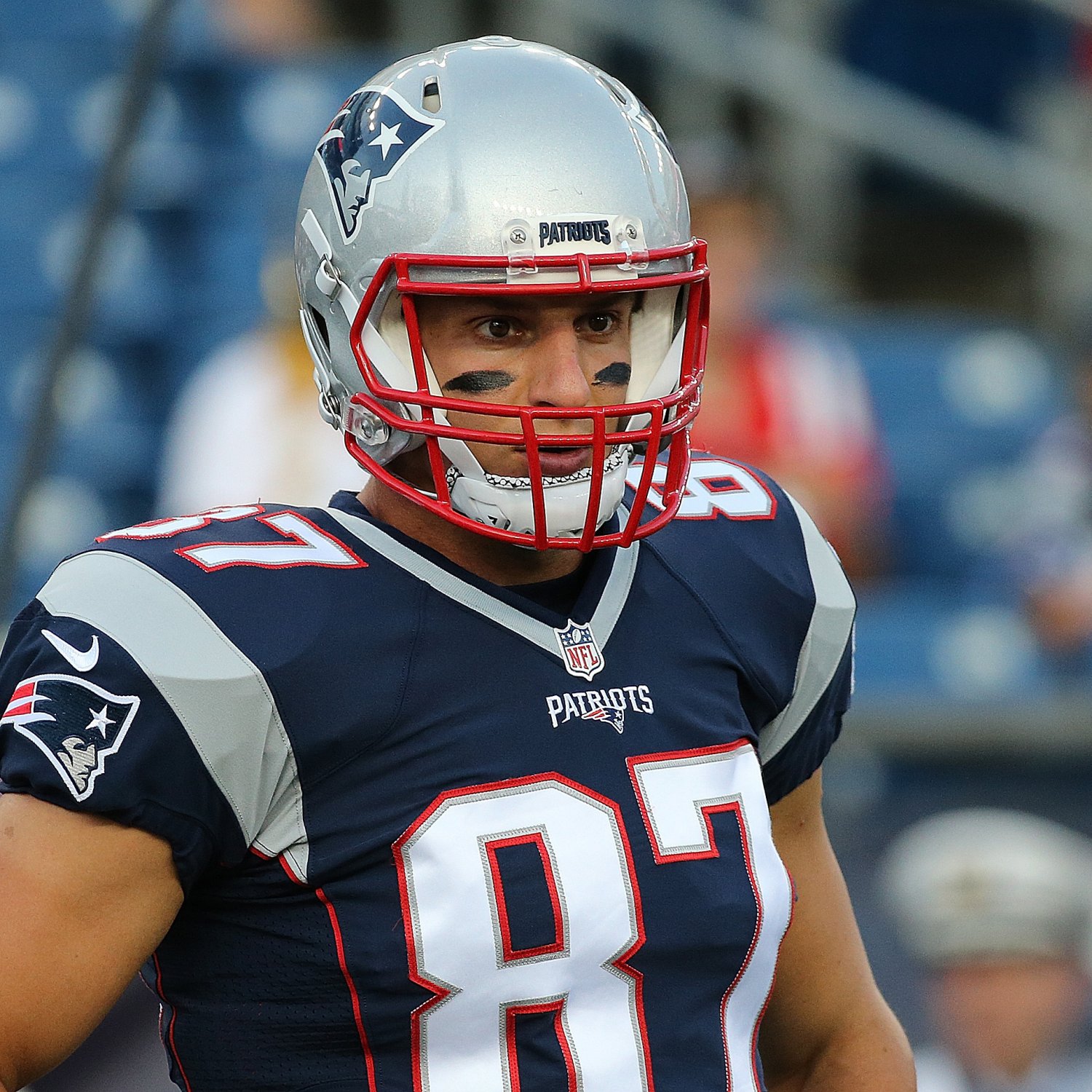
![]() John Lennon didn’t play fantasy football, but if he did, his advice for you would probably be: “Fantasy drafts are what happen to you while you’re busy making a plan.”
John Lennon didn’t play fantasy football, but if he did, his advice for you would probably be: “Fantasy drafts are what happen to you while you’re busy making a plan.”
Or something like that.
The point, if there is one, is that while it’s important to have a plan going into your draft, you shouldn’t be a slave to it. Otherwise, the draft will pass you by.
With that in mind, let’s break down my rankings and philosophy for drafts this season.
10-Round Draft Rankings
![]()
Analysis
![]()
As hinted at in this article’s introduction, I believe in two main draft principles:
- Go into your draft with the loose framework of a plan.
- Don’t be afraid to deviate from the plan depending on how the draft develops.
So this year, what’s the plan?
The first part of the plan, every year, is to take trustworthy and reliable players in the first three rounds.
I’m talking players who have either consistently been top fantasy performers in the past or who have the talent and opportunity to be solid players this year. Players who don’t have a history of off-field or injury concerns that could cost them playing time. Players who have produced in the past (i.e., receivers who have a history of accumulating a lot of targets, receptions and receiving yards rather than players who had a season with double-digit touchdowns).
Targets and yards are indicators of a player’s role in a team’s offense. Touchdowns, on the other hand, can be extremely fickle.
So that’s the broad plan for the first three rounds. But on a more specific level, I want to secure reliable running backs as quickly possible.
Look, running back was a mess last year. Antonio Brown and Julio Jones, wide receivers, outscored every running back. Just five running backs had as many or more points than Rob Gronkowski. In the flex rankings, just nine running backs finished in the top 25.
And the position was such a mess, Danny Woodhead—who only had 97 carries—finished as the 10th-ranked player at the position. Danny Woodhead!
Now last year, in particular, was insane. Jamaal Charles, Mark Ingram, LeSean McCoy, Le’Veon Bell, Marshawn Lynch, Arian Foster, Justin Forsett and Jonathan Stewart all missed significant time to injury. Eddie Lacy, DeMarco Murray and Alfred Morris were huge busts. And a number of players found themselves trapped in running back-by-committee situations.
In 2015, productive running backs were worth their weight in gold. There’s little reason to believe anything should be different this season.
It’s why Adrian Peterson would be my top overall pick. It’s why I have 13 running backs in my top 30, second only to wide receivers (14). It’s why young players with just one season of production (Todd Gurley and David Johnson) and a certain rookie (Ezekiel Elliott) should be first-round picks.
And it’s why players such as Thomas Rawls are in my top 20 (though that is definitely subject to change). Rawls is a member of a Seattle Seahawks offense that loves to pound the rock, but he also only has one year of fantasy viability and is currently battling Christine Michael for touches.
“His consistency is really much, much improved, in that he is seeing the line of scrimmage really well,” coach Pete Carroll told Jayson Jenks of the Seattle Times when asked about Michael. “He’s taking advantage of the plays. He ran kind of wild at times and was impatient at times.”
Now that he isn’t so impatient, Michael is a threat to steal carries in Seattle. It’s indicative of a trend happening across the NFL—coaches would rather spread out carries and keep players fresh rather than riding just one running back—and it certainly makes Rawls a very risky pick.
In turn, that makes the league’s true feature backs all the more valuable.
Even Bell—who will be suspended for the first three games of the 2016 season—is incredibly valuable because of how productive he’ll be when he returns. Without the suspension, Bell would have been the top overall player in my rankings. Even with three games on the sideline, he’s still a top-30 pick, if only because he’ll be a force of nature for the rest of the season.
If you are drafting solely on positional value, you’ll target running backs early and perhaps tight end Rob Gronkowski, who often has more value over other players at his position than any other player in the NFL.
If we look at Gronk’s value over replacement player (VORP) in 10-man leagues—defining a replacement player as the No. 11 quarterback and tight end and the No. 21 running back and wide receiver, since standard leagues require you to start one quarterback, one tight end, two running backs and two wide receivers—Gronkowski is still among the league leaders.
![]()
This list is also a pretty strong indicator of how you should format your first round. Five of the top seven players in VORP last season came from running backs and wide receivers, suggesting that the elite players at those positions are generally more valuable than the top options at other positions.
Whereas the quarterback and tight end positions tend to even out quickly in terms of production, the top options at wideout and running back separate themselves from the pack. That’s why they dominate the opening rounds.
And that’s why after last year’s debacle, I’ll be hoping to nab at least two reliable, high-ceiling running backs in the first three rounds and building my team from there. Every other position has quality depth well down the board. But the running backs thin out quickly.
Don’t miss out.
All scoring and points-against stats via ESPN standard-scoring leagues. You can follow Timothy Rapp on Twitter.
Read more Fantasy Football news on NerdyFootball.com

